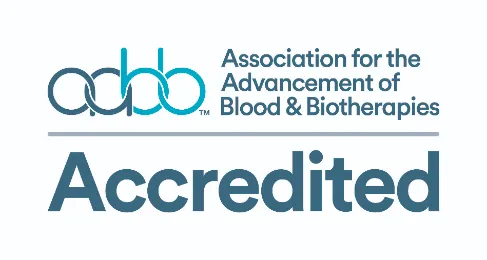Parent’s Guide to Cord Blood , December, 2024
Chronic wounds are common
The biggest application of placentas today is for chronic wounds. The number of patients suffering with wounds that will not close and heal on their own has been growing steadily, due to the aging of our population. Chronic wounds are seen in patients that are elderly, that are bed-ridden, and individuals who are immune compromised. The two most common types of chronic wounds are diabetic ulcers and venous stasis ulcers1.
Some of the warning signs of a chronic wound are if the size of the wound does not decrease over 2-4 weeks, if the wound keeps getting infected, or if the new tissue forming in the wound is not healthy. Typically, a wound that does not heal in one to three months is considered “chronic.”2 In the United States, 16.4% of Medicare beneficiaries (mostly people over age 65), which is equivalent to 10.5 million people, had a chronic wound in 20193. The cost of treating those chronic wounds in Medicare patients was USD 22.5 billion3.
Chronic wounds are most often seen on the feet, typically as diabetic foot ulcers, or the lower leg, commonly as venous stasis ulcers. The underlying cause of these ulcers is poor blood flow to the extremities of the body. Wounds take longer to heal in diabetics because elevated blood sugar leads to damaged blood vessels4. Peripheral artery disease (PAD), which can occur with or without diabetes, contributes to lower extremity ulcers5. Most of us have an older relative who is at risk of a chronic wound. In addition to the pain and disability experienced by the patient, family members often need to get involved to help the patient with activities of daily living and make sure they are making it to all their medical appointments. The stakes are high: the five-year mortality rate after developing a diabetic ulcer is about 40%1. In the United States, about 150,00 patients per year undergo a lower limb amputation; most of these amputations are performed in diabetics and in 85% of those cases the problems that led to the amputation started with a chronic wound6.
How placentas help chronic wounds to heal
The good news is that wound dressings made from the placenta dramatically improve healing of chronic wounds. The simplest way to make a wound dressing from the placenta is to use the outermost layer, called the “amniotic membrane” or just “amnion,” directly to cover the wound. No one knows when this practice began, but around the time of the first World War several articles in the medical literature documented the use of “fetal membranes” for skin grafting7-9. By the time of the second World War, doctors began to use these membranes for eye injuries as well10.
Currently, biotech companies are manufacturing dozens of wound dressing products that contain cells from the placenta11. They come in various formats, where the placenta cells can be embedded in a matrix or a hydrogel12. Ophthalmologists routinely use the amniotic membrane to treat wounds and infections of the eye13,14. In recent years there has been a shift from treating chronic wounds of the extremities in hospital settings to treating them during outpatient procedures in doctor’s offices3. The variety of products that are available make it possible for physicians to use placenta therapy in various medical procedures.
The popularity of placenta-derived wound dressings stems from several factors. It has been known for many years that wounds heal better when they are covered with a biologic graft, but patients may react to foreign grafts from animals or other people, and using a graft from elsewhere on the patient’s body creates secondary wounds. The placenta was designed by nature not to trigger the immune system, because during pregnancy it helps mothers not to reject the baby in their womb. Hence, the placenta is the perfect source for a wound graft9. The placenta also contains essential growth factors, cytokines, and extracellular matrix proteins that promote wound healing. When applied to chronic wounds, the cells or tissue of the placenta can stimulate cell growth, reduce inflammation, inhibit microbial infection, and accelerate the healing process to facilitate improved wound closure and reduced recovery time.
At the Sept. 2023 meeting of the American Association of Tissue Banks (AATB) in Washington D.C., it was stated by epidemiologist Lennox Archibald, MD PhD, that the need for placentas to treat venous stasis ulcers is growing faster than the supply of donated placentas. Hopefully when expectant mothers are approached for consent to placenta donation, they will be aware that their donations help to fill an unmet need for chronic wound treatments.
Sue’s Story: Amniotic dressing restored her sight
Here is one story of a patient who had her vision restored by eye treatments using amniotic membrane from placenta donations. As a child, Sue was diagnosed as having an auto-immune condition, but it was never identified, and testing was always inconclusive. Over the years, strange anomalies with her health would pop up, but a dose of steroids would always cure the problem. At 59 years old, Sue was loving her life. Things were going great for her. She had three grown children and she loved spending time with her four grandchildren. She had a job as the director of operations at a nonprofit that worked with the under-privileged in Fort Wayne, Indiana.
In September of 2017, that all changed when she had a sudden onset of issues with her eyes. Small ulcers started forming on the corneas of both her eyes. She immediately called her ophthalmologist and was put on steroids, and she was given patches to wear on her eyes like contact lenses. However, the ulcers which had started as small spots continued to progress to cover the entire corneas of both eyes. After several months of traditional treatment, Sue was not seeing any improvement. She was in so much misery from her eyes that she was no longer able to be in any lighted areas, could hardly open her eyes during the day without severe pain, was unable to work, was unable to drive, and basically could not take care of herself. She was forced to move into her daughter’s house, specifically the basement so that she could live in mostly darkness. At Sue’s last eye exam in Fort Wayne in December of 2017, her vision was 20/200 in both eyes and the pain was becoming unbearable. Her doctor admitted that he had never seen a corneal ulcer like this before and referred her to an eye specialist in Indianapolis, Indiana.
December of 2017 was a turning point for Sue. She saw the eye specialist in Indianapolis, and after the examination, the physician immediately placed amnion grafts on both of her corneas. Sue had hope for the first time in several months that maybe her sight could be restored. Over the next few weeks, with the amnion grafts in place, the pain subsided tremendously. By May of 2018, with the continued treatments using amnion, Sue was noticeably improving. She took encouragement from the fact that corneas heal at a must faster rate than other tissues.
Fast forward to 2023… It took several years for her eyes to heal, and Sue is not completely out of the woods. She still must use steroid and antibiotics drops continually to keep on top of any outbreaks. Sue still has light sensitively and extreme dry eyes, but her life is not limited to living in the dark. She is back in her own home, driving once again, and enjoying the things she did before that fateful day in September of 2017.
Sue wants to thank with all her heart the generosity of the mom that donated her baby’s birth tissues. If it was not for that selfless act of donation, she would be blind. Sue says, “Because that mom cared enough to donate, it offered me new hope and possibilities that I can see my grandkids grow up, be active within my community and see all that is beautiful around me. This gift opened a door for a brighter future for me.”
References
- Bowers S, & Franco E. Chronic Wounds: Evaluation and Management. American Family Physician. 2020; 101(3):159-166.
- Berezo M. et al. Predicting Chronic Wound Healing Time Using Machine Learning. Advances in Wound Care. 2022; 11(6):281-359.
- Carter MJ. et al. Chronic wound prevalence and the associated cost of treatment in Medicare beneficiaries: changes between 2014 and 2019. J Medical Economics. 2023; 26(1):894-901.
- Dresden D. Effects of diabetes on the body and organs. MedicalNewsToday. Updated 2023-05-04
- Editorial Staff. Peripheral Artery Disease and Diabetes. American Heart Association. Last reviewed 2021-05-04
- Molina CS, Faulk JB. Lower Extremity Amputation. Stat Pearls. 2022;
- Davis JS. Skin transplantation with a review of 550 cases at the John’s Hopkins Hospital. JHH Report. 1910; 15:307-396.
- Sabella N. Use of fetal membranes in skin grafting. Med Record NY. 1913; 83(11):478–480.
- Stern M. The grafting of preserved amniotic membrane to burned and ulcerated surfaces, substituting skin grafts. JAMA 1913; 60:973-974.
- De Roth A. Plastic repair of conjunctival defects with fetal membranes. JAMA Ophthalmology 1940; 23(3):522-525.
- Amniotic Membrane of the Placenta – Part 1: Today’s State of The Art. Parent’s Guide to Cord Blood Foundation newsletter published 2016-09
- Khoury O. & Murphy S. Wound Healing with Hydrogels that hold Amniotic Fluid and Membrane. Parent’s Guide to Cord Blood Foundation newsletter published 2017-09
- Holt Y. Amniotic Membrane uses in Ophthalmology. Parent’s Guide to Cord Blood Foundation newsletter published 2017-09
- Institute of Cell Therapy. Cryopreserved Amniotic Membrane in the Treatment of Keratitis. Parent’s Guide to Cord Blood Foundation newsletter published 2021-12.
Source: Parent’s Guide to Cord Blood
Link: https://parentsguidecordblood.org/en/news/what-do-they-do-all-those-placenta-donations







